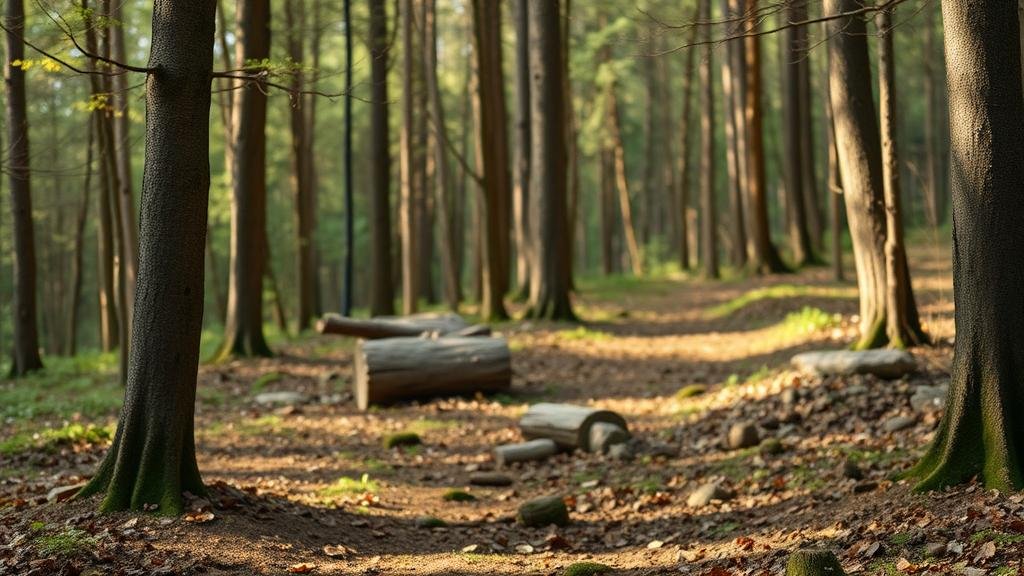Unearthing Silver Coins Along Forgotten Paths in Old Forests
Unearthing Silver Coins Along Forgotten Paths in Old Forests
The allure of discovering silver coins in old forests is a captivating endeavor that combines elements of archaeology, history, and adventure. This article delves into the intricacies of this practice, exploring the historical context, methodologies employed, and the implications of such discoveries.
The Historical Significance of Silver Coins
Silver coins have been used as currency for millennia, indicating economic activity and trade routes that have long since vanished. For example, the silver denarius of ancient Rome was widely circulated throughout the empire, signifying both commerce and the artistic craftsmanship of the era. Over time, as settlements grew and trade routes evolved, many coins became lost or buried, often in locations that are now thickly forested.
Studies have shown that forests can often mask historical pathways. An estimated 30% of the worlds forests are believed to have histories that include ancient trade routes and migration paths. Unearthing coins from these locations can provide significant insights into trade dynamics, cultural exchanges, and the socio-economic climate of the periods they represent.
Methodologies for Coin Hunting in Forested Areas
The process of searching for silver coins in old forests involves several steps, each of which plays a critical role in the potential discovery of buried treasure. e methodologies can be categorized as follows:
- Research and Preparation: Understanding historical maps and local lore is crucial. Utilizing resources such as the US Geological Survey maps or regional historical societies can guide enthusiasts to promising sites.
- Metal Detection: Metal detectors are the primary tools for unearthing metallic objects. Using advanced models with discrimination capabilities allows searchers to filter out debris while focusing on relics of interest, such as silver coins.
- Ground Penetrating Radar (GPR): In certain cases, GPR technology can be employed to assess whats below the surface without intrusive digging. This method is particularly useful in larger areas where coins may be diffusely scattered.
- Excavation Techniques: Once a target is identified, careful excavation is vital. Techniques like hand digs or using small trowels can help prevent damage to artifacts and enhance the preservation of the site.
Case Studies: Successful Coin Discoveries
Several notable discoveries have highlighted the potential for finding silver coins in forested areas. For example, in 2017, a team using metal detectors in a wooded area of Pennsylvania unearthed a cache of 1,000 silver coins dating back to the early 1900s. This discovery not only provided tangible evidence of local economic activity but also contributed to the communitys historical narrative.
Another fascinating case involved the discovery of ancient silver coins in a dense forest in Germany, believed to be remnants of lost trade routes from the medieval period. The findings, which included coins that featured intricate designs and inscriptions, emphasized the wealth and trade dynamics of that era.
Challenges and Ethical Considerations
While the thrill of discovery is compelling, there are also significant challenges and ethical considerations regarding metal detecting in forests. Issues such as land ownership rights, environmental impacts, and the importance of preserving archaeological integrity must be taken into account.
Also, potential treasure hunters should be aware of local laws regarding artifact recovery. Many regions require permits for metal detecting, especially in historically significant sites. Engaging in responsible collecting and adhering to regulations not only protects the integrity of historical sites but also promotes a positive relationship between treasure hunters and the archaeological community.
Conclusion: Actionable Takeaways
Unearthing silver coins along forgotten paths in old forests can yield fascinating historical insights and personal adventures. To engage in this endeavor responsibly, consider the following actionable takeaways:
- Conduct thorough research on historical sites and legal regulations concerning metal detecting in your area.
- Use modern technology, such as metal detectors and GPR, to optimize your search efforts.
- Respect the environment and the historical context of your findings by practicing ethical treasure hunting.
- Document your discoveries and share them with local historical societies to enrich community knowledge.
To wrap up, the pursuit of silver coins in old forests not only offers the promise of treasure but also allows individuals to connect with the rich tapestry of history that surrounds us. With preparation, caution, and respect for the past, adventurers can contribute meaningfully to our understanding of history while enjoying the thrill of discovery.



